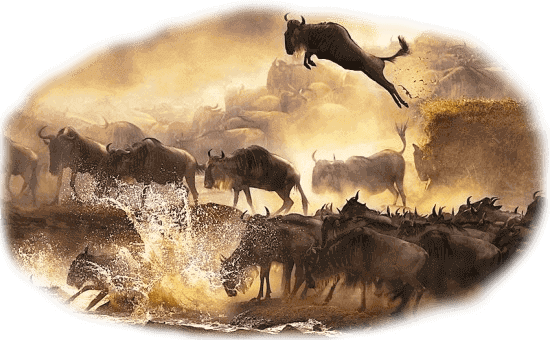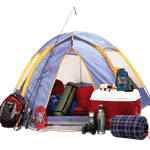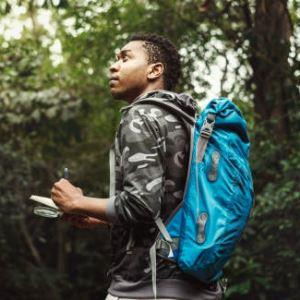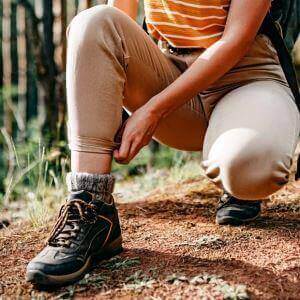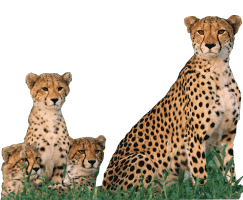 For French travelers venturing into East Africa for the first time, Kenya offers an extraordinary mix of wildlife, culture, and breathtaking scenery. A safari through this East African gem promises an unforgettable experience, especially when planned well in advance. Below is an outline of a detailed one-week Kenya safari plan for first-timers to help you explore the most iconic destinations and make the most of your African adventure. Begin your journey in Nairobi, the capital city, where you can ease into your adventure by visiting Nairobi National Park. Just a short drive from the city center, this park is home to lions, giraffes, and rhinos and offers a soft introduction to Kenya's rich biodiversity. After a restful night in the city, head south to Amboseli National Park. Famous for its large elephant herds and stunning views of Mount Kilimanjaro, Amboseli is a highlight for wildlife photographers and nature lovers alike. From Amboseli, continue your journey northward to Lake Nakuru National Park. This destination is ideal for bird lovers, thanks to its population of flamingos, pelicans, and more than 400 other bird species. It’s also one of the best places in Kenya to see white and black rhinos. A game drive here is both peaceful and rewarding, offering glimpses of giraffes, baboons, and leopards. No Kenyan safari is complete without a visit to the Maasai Mara National Reserve. This world-renowned park offers the ultimate wildlife experience. If your visit coincides with the Great Migration (typically July to October), you'll witness thousands of wildebeests and zebras crossing the plains and rivers a spectacle of nature. Even outside migration season, the Maasai Mara is home to the Big Five and countless other species, offering thrilling game drives and a chance to learn about Maasai culture through local village visits. French travelers should take note of practical travel tips before setting off. A valid passport, eVisa, and yellow fever certificate are essential. Additionally, vaccinations and malaria prophylaxis are recommended. Packing light, breathable clothing in neutral tones, sunscreen, and insect repellent will help ensure comfort during the trip. This well-curated itinerary captures the essence of Kenya’s natural beauty and wildlife. From the savannahs of the Maasai Mara to the flamingo-filled shores of Lake Nakuru, the journey is designed to immerse travelers in diverse ecosystems teeming with life. Each destination reveals a different side of Kenya’s charm, ensuring that every day feels like a new adventure. First-time visitors are given the chance to dive into the authentic safari experience, while also connecting with the cultural heritage of the region through visits to local villages and interactions with the Maasai people. The excitement of spotting the Big Five, the awe of watching elephants roam under the gaze of Mount Kilimanjaro, and the serenity of Lake Nakuru's birdlife all combine to create a fulfilling and transformative travel experience. Whether you're gazing at elephants in the shadow of Kilimanjaro, witnessing a lion stalk its prey on the open savannah, or enjoying a quiet sunset over the Mara, this itinerary promises moments that will remain etched in your memory forever. It’s not just a vacation it’s a life-changing encounter with nature and culture at their most profound.
For French travelers venturing into East Africa for the first time, Kenya offers an extraordinary mix of wildlife, culture, and breathtaking scenery. A safari through this East African gem promises an unforgettable experience, especially when planned well in advance. Below is an outline of a detailed one-week Kenya safari plan for first-timers to help you explore the most iconic destinations and make the most of your African adventure. Begin your journey in Nairobi, the capital city, where you can ease into your adventure by visiting Nairobi National Park. Just a short drive from the city center, this park is home to lions, giraffes, and rhinos and offers a soft introduction to Kenya's rich biodiversity. After a restful night in the city, head south to Amboseli National Park. Famous for its large elephant herds and stunning views of Mount Kilimanjaro, Amboseli is a highlight for wildlife photographers and nature lovers alike. From Amboseli, continue your journey northward to Lake Nakuru National Park. This destination is ideal for bird lovers, thanks to its population of flamingos, pelicans, and more than 400 other bird species. It’s also one of the best places in Kenya to see white and black rhinos. A game drive here is both peaceful and rewarding, offering glimpses of giraffes, baboons, and leopards. No Kenyan safari is complete without a visit to the Maasai Mara National Reserve. This world-renowned park offers the ultimate wildlife experience. If your visit coincides with the Great Migration (typically July to October), you'll witness thousands of wildebeests and zebras crossing the plains and rivers a spectacle of nature. Even outside migration season, the Maasai Mara is home to the Big Five and countless other species, offering thrilling game drives and a chance to learn about Maasai culture through local village visits. French travelers should take note of practical travel tips before setting off. A valid passport, eVisa, and yellow fever certificate are essential. Additionally, vaccinations and malaria prophylaxis are recommended. Packing light, breathable clothing in neutral tones, sunscreen, and insect repellent will help ensure comfort during the trip. This well-curated itinerary captures the essence of Kenya’s natural beauty and wildlife. From the savannahs of the Maasai Mara to the flamingo-filled shores of Lake Nakuru, the journey is designed to immerse travelers in diverse ecosystems teeming with life. Each destination reveals a different side of Kenya’s charm, ensuring that every day feels like a new adventure. First-time visitors are given the chance to dive into the authentic safari experience, while also connecting with the cultural heritage of the region through visits to local villages and interactions with the Maasai people. The excitement of spotting the Big Five, the awe of watching elephants roam under the gaze of Mount Kilimanjaro, and the serenity of Lake Nakuru's birdlife all combine to create a fulfilling and transformative travel experience. Whether you're gazing at elephants in the shadow of Kilimanjaro, witnessing a lion stalk its prey on the open savannah, or enjoying a quiet sunset over the Mara, this itinerary promises moments that will remain etched in your memory forever. It’s not just a vacation it’s a life-changing encounter with nature and culture at their most profound.
One-Week Kenya Safari Tour Plan for French Tourists
| Day | Location | Activities |
|---|---|---|
| 1 | Nairobi | Arrive, visit Nairobi National Park, acclimate |
| 2 | Amboseli National Park | Game drives, Mt. Kilimanjaro viewing |
| 3 | Amboseli | Morning and evening safaris |
| 4 | Lake Nakuru | Bird watching, rhino spotting |
| 5 | Maasai Mara | Afternoon game drive, cultural village visit |
| 6 | Maasai Mara | Full-day safari, Big Five sightings |
| 7 | Nairobi | Return to Nairobi, shopping, departure |
Best Time to Visit Kenya for French Safari Travelers
For French safari enthusiasts planning a Kenyan adventure, timing is everything. Kenya offers a rich tapestry of wildlife and landscapes throughout the year, but certain months provide more favorable conditions for a safari experience. Generally, Kenya experiences two main dry seasons: from January to March and from July to October. These are considered the best times for game viewing because the lack of rain forces animals to congregate around permanent water sources, making them easier to spot during game drives. The period between July and October is especially notable for the Great Migration, a world-famous event in which millions of wildebeests, zebras, and gazelles cross the plains of the Maasai Mara from Tanzania's Serengeti. This natural spectacle is a major draw for tourists from all over the world, and French travelers will find it both thrilling and unforgettable. During this time, the climate is cool and dry, ideal for both wildlife viewing and comfortable travel. The rainy seasons (April to June and November) offer lush scenery and fewer crowds, but the roads can become muddy and some lodges may close temporarily. Birdwatchers, however, may enjoy these months due to the presence of migratory birds. Regardless of the season, it’s essential to consider what to pack for a Kenya safari as a French traveler, ensuring you're well-prepared for varying weather and terrain. Proper preparation can significantly enhance your comfort and overall experience in the wild. Selecting the right time to visit depends on your personal preferences and travel goals. Whether you prioritize witnessing the awe-inspiring Great Migration or prefer a quieter, more intimate safari during the green season, Kenya delivers unforgettable wildlife encounters throughout the year. If your travel aims are centered around iconic wildlife spectacles, then the dry season from July to October is ideal. This is when the Maasai Mara becomes the stage for one of the world’s most remarkable animal migrations, drawing lions, crocodiles, and other predators in dramatic scenes of nature. The green season, spanning April to June and again in November, has its own charms. Lush landscapes, vibrant birdlife, and fewer tourists make for a peaceful, scenic experience. While some lodges may close temporarily and road conditions can be less predictable, the rewards include lower prices and an abundance of photographic opportunities with dramatic skies and blooming flora. A well-timed trip aligned with these seasonal insights ensures that your Kenyan safari will be both enriching and memorable. Take into account not only weather and wildlife patterns but also your interest in photography, birdwatching, or cultural experiences. With thoughtful planning, each season opens a window into Kenya's natural magic, tailor-made for discovery and awe.
Weather Patterns and Peak Safari Seasons in Kenya
Understanding Kenya's weather is key to planning an enjoyable safari, especially for French travelers experiencing the country for the first time. Kenya has two main dry seasons: from January to March and July to October. These dry periods offer the best game viewing opportunities, as animals gather around limited water sources, making sightings more predictable and rewarding. The July to October stretch also coincides with the Great Migration in the Maasai Mara, where millions of wildebeests, zebras, and gazelles cross from the Serengeti in Tanzania. This world-renowned event draws not only predators but also nature lovers and photographers from across the globe. The rainy seasons April to June and November transform the landscape into a lush, green paradise. While game viewing may be more challenging due to tall grasses and scattered wildlife, these months are excellent for birdwatching as migratory species arrive. The scenery is stunning, accommodations are often more affordable, and the parks are less crowded, offering a more tranquil experience. Knowing what French tourists need to know before a Kenya safari helps in choosing the right season and crafting a well-rounded experience. The dry seasons, spanning January to March and July to October, not only offer the best conditions for game viewing but also simplify travel logistics. Roads are more accessible, and wildlife congregates around watering holes, increasing the chances of spotting the Big Five and witnessing the Great Migration in the Maasai Mara. These months also tend to be cooler and more comfortable for long days on safari. The green or wet seasons April to June and November present a different kind of adventure. Though some roads may be muddy and visibility lower due to tall grasses, these months reward travelers with dramatic landscapes, vivid sunsets, and an influx of migratory birds. Lodges often offer discounted rates, making it a cost-effective time to explore Kenya's vast wilderness. It's also an excellent opportunity for photographers seeking atmospheric shots and unique perspectives. Every season in Kenya has its own charm and character. By understanding the pros and cons of each period, French tourists can align their travel expectations accordingly. Whether you're after high-energy wildlife chases or tranquil scenic beauty, Kenya has something unforgettable to offer in every season.
Top Kenya Safari Destinations for First-Time Visitors
 Kenya boasts a stunning array of national parks and game reserves that cater perfectly to first-time safari-goers. For French travelers eager to dive into Africa’s wild heart, this curated selection balances iconic wildlife viewing with cultural immersion. Begin your adventure in Nairobi National Park, uniquely located just outside the capital city. It's the only national park bordering a major city, offering the rare opportunity to see lions, giraffes, zebras, and rhinos with a backdrop of city skyscrapers. This convenient starting point is excellent for easing into safari life after a long flight from France. From there, head south to Amboseli National Park, renowned for its vast elephant herds and sweeping views of Mount Kilimanjaro. It’s a paradise for photographers, especially in the early morning light. The park's open landscapes also make it easier to spot cheetahs, hyenas, and buffalo. Travel next to Lake Nakuru National Park, a birdwatcher’s haven famous for its flocks of flamingos and significant rhino population. Its alkaline lake and wooded hills provide a scenic contrast to the open plains of Amboseli and Maasai Mara. Finish your journey in the legendary Maasai Mara National Reserve. Whether you're visiting during the Great Migration or not, the Mara offers unrivaled opportunities to witness the Big Five in action. Game drives here are exhilarating, and nearby Maasai villages offer a cultural dimension to your wildlife experience. This combination of parks offers diversity, accessibility, and the chance to create unforgettable memories for French travelers embarking on their first Kenyan safari. Nairobi National Park provides a gentle introduction to wildlife viewing without straying far from urban amenities. It sets a comfortable pace for those adjusting to a new environment. Amboseli National Park brings dramatic scenery and intimate wildlife encounters, especially with its famous elephant herds and iconic views of Mount Kilimanjaro. It also offers ample opportunities for photography and understanding local ecosystems, making it a well-rounded stop on any itinerary. Lake Nakuru National Park adds a vibrant contrast with its birdlife and protected rhino population. Nestled around an alkaline lake, this park is especially rewarding for those interested in ornithology and conservation. Its compact size allows for fulfilling game drives in a relatively short amount of time. The Maasai Mara, arguably Kenya's crown jewel, delivers on the ultimate safari promise. From the thundering hooves of the Great Migration to the stealthy movements of leopards through tall grass, the park offers high-impact moments that leave lasting impressions. Cultural interactions with the Maasai people also deepen the travel experience. These parks form the best national parks to visit in a week in Kenya, each offering something unique yet complementary. They cater to both the curious newcomer and the seasoned adventurer, ensuring that every day brings new wonders and unforgettable stories.
Kenya boasts a stunning array of national parks and game reserves that cater perfectly to first-time safari-goers. For French travelers eager to dive into Africa’s wild heart, this curated selection balances iconic wildlife viewing with cultural immersion. Begin your adventure in Nairobi National Park, uniquely located just outside the capital city. It's the only national park bordering a major city, offering the rare opportunity to see lions, giraffes, zebras, and rhinos with a backdrop of city skyscrapers. This convenient starting point is excellent for easing into safari life after a long flight from France. From there, head south to Amboseli National Park, renowned for its vast elephant herds and sweeping views of Mount Kilimanjaro. It’s a paradise for photographers, especially in the early morning light. The park's open landscapes also make it easier to spot cheetahs, hyenas, and buffalo. Travel next to Lake Nakuru National Park, a birdwatcher’s haven famous for its flocks of flamingos and significant rhino population. Its alkaline lake and wooded hills provide a scenic contrast to the open plains of Amboseli and Maasai Mara. Finish your journey in the legendary Maasai Mara National Reserve. Whether you're visiting during the Great Migration or not, the Mara offers unrivaled opportunities to witness the Big Five in action. Game drives here are exhilarating, and nearby Maasai villages offer a cultural dimension to your wildlife experience. This combination of parks offers diversity, accessibility, and the chance to create unforgettable memories for French travelers embarking on their first Kenyan safari. Nairobi National Park provides a gentle introduction to wildlife viewing without straying far from urban amenities. It sets a comfortable pace for those adjusting to a new environment. Amboseli National Park brings dramatic scenery and intimate wildlife encounters, especially with its famous elephant herds and iconic views of Mount Kilimanjaro. It also offers ample opportunities for photography and understanding local ecosystems, making it a well-rounded stop on any itinerary. Lake Nakuru National Park adds a vibrant contrast with its birdlife and protected rhino population. Nestled around an alkaline lake, this park is especially rewarding for those interested in ornithology and conservation. Its compact size allows for fulfilling game drives in a relatively short amount of time. The Maasai Mara, arguably Kenya's crown jewel, delivers on the ultimate safari promise. From the thundering hooves of the Great Migration to the stealthy movements of leopards through tall grass, the park offers high-impact moments that leave lasting impressions. Cultural interactions with the Maasai people also deepen the travel experience. These parks form the best national parks to visit in a week in Kenya, each offering something unique yet complementary. They cater to both the curious newcomer and the seasoned adventurer, ensuring that every day brings new wonders and unforgettable stories.
Must-See National Parks and Game Reserves in Kenya
When planning a safari in Kenya, especially as a first-time traveler from France, choosing the right national parks and reserves can make all the difference. Kenya is home to some of the most iconic wildlife habitats in Africa, offering unmatched opportunities to observe animals in their natural settings. Here's a breakdown of the top destinations to include on your journey, perfect for Kenya safari animal encounters in a week:
- Nairobi National Park: Just minutes from the bustling capital city, this unique park lets you witness giraffes, rhinos, and lions against the backdrop of city skyscrapers. It's ideal for a gentle introduction to Kenya's wildlife, especially for travelers recovering from a long international flight.
- Amboseli National Park: Known for its large elephant herds and spectacular views of Mount Kilimanjaro, Amboseli is a favorite among photographers. Its open plains make it easy to spot wildlife, including cheetahs, hyenas, and buffalo.
- Lake Nakuru National Park: Famous for its pink flamingos and growing rhino population, this compact park offers rich birdlife and great opportunities to see leopards, baboons, and giraffes. Its variety of habitats supports a wide range of species, making it a rewarding stop.
- Maasai Mara National Reserve: The crown jewel of Kenya safaris, the Mara is renowned for the Great Migration and Big Five sightings. The landscape is classic African savannah, and game drives here are consistently action-packed. Visiting a local Maasai village adds a cultural layer to the adventure.
Each of these destinations contributes something unique to the overall safari experience, ensuring diversity in wildlife, landscapes, and local culture within just seven days.
Travel Tips and Practical Advice for French Tourists in Kenya
Preparing for a Kenyan safari can be just as exciting as the trip itself, especially for French tourists looking forward to their first African adventure. With so much to see and do, it's important to be well-prepared to ensure a smooth and enjoyable journey. Whether it’s your first time on safari or your first trip to the continent, knowing what to expect will enhance your overall experience. Start with the basics: a valid passport is required for French citizens, and travelers must apply for a Kenyan eVisa online before arrival. You’ll also need a yellow fever vaccination certificate to enter the country. It’s advisable to consult with a travel clinic well in advance to get up to date on vaccinations such as typhoid, hepatitis A, and to receive guidance on malaria prophylaxis. Packing wisely is essential. Lightweight, breathable clothing in neutral colors helps you stay cool while blending into the environment. Sunscreen, insect repellent, a wide-brimmed hat, and sturdy walking shoes are must-haves. Don’t forget essentials like binoculars, a camera, and a small medical kit. Luggage restrictions on domestic flights often require soft-sided bags with limited weight, so pack efficiently. For those planning a beginner-friendly Kenya safari for French visitors, understanding local customs is helpful. Kenya is generally conservative in its dress code, especially in rural communities, so modest clothing is advised. Learning a few basic Swahili phrases like "Jambo" (hello) or "Asante" (thank you) is always appreciated and adds a warm touch to interactions. Currency in Kenya is the Kenyan Shilling. While major hotels and lodges accept credit cards, carrying small amounts of cash is useful for tips and purchases in local markets. Inform your bank of your travel plans to avoid issues with card usage. Remember that patience and flexibility are key on safari. Wildlife sightings aren’t guaranteed, and every day brings something new and unexpected. Game drives may involve long periods of quiet observation before thrilling moments of discovery. Embrace this unpredictability as part of the experience rather than a drawback. Whether it's the excitement of spotting a lion lounging in the shade, or the serenity of watching elephants bathe in a river, each encounter holds its own magic. Nature operates on its own schedule, and travelers should come prepared with an open mind and a sense of curiosity. Guides and rangers work tirelessly to provide the best experiences, but they cannot control the rhythms of the wild. This makes every safari feel authentic and rewarding, with no two days ever the same. The beauty of a Kenyan safari lies not just in ticking off animal sightings but in immersing yourself in the rhythms of the natural world. Listening to the sounds of the savannah at dusk or watching the sunrise over the plains are moments that stay with you long after you return home. These quiet, reflective experiences complement the more dramatic ones, rounding out a journey that is as emotionally enriching as it is visually spectacular. A safari in Kenya teaches patience, awakens the senses, and fosters a deeper appreciation for the natural world. It is a journey that touches the soul, providing unforgettable memories and meaningful personal insights.
Essential Travel Documents and Vaccination Requirements
French travelers planning a safari in Kenya must be well-prepared with the appropriate travel documentation and health precautions to ensure a smooth and worry-free experience. The cornerstone of your travel preparations begins with having a valid passport. It must be valid for at least six months from your date of entry into Kenya. In addition, all French citizens are required to apply for a tourist visa. Kenya now operates a fully online eVisa system, which allows travelers to submit applications and receive approval before their trip. It is advisable to apply at least two weeks in advance to avoid last-minute complications. Health documentation is equally critical. A yellow fever vaccination certificate is mandatory for entry into Kenya, especially if you are arriving from or have transited through a country with a risk of yellow fever transmission. This vaccination should be taken at least ten days prior to travel. While this is the only compulsory vaccine, other recommended immunizations include hepatitis A, typhoid, and in some cases, hepatitis B and rabies, depending on the duration and nature of your visit. Malaria is present in many safari regions, so it is recommended to consult a travel health clinic for appropriate prophylaxis. Alongside medication, preventive measures such as using insect repellent, sleeping under mosquito nets, and wearing long-sleeved clothing during the evening can significantly reduce the risk of infection. Travel insurance that covers medical emergencies, trip cancellations, and evacuation is highly recommended. Kenya's remote safari locations often mean that access to medical facilities can be limited. Therefore, comprehensive coverage offers peace of mind. Keep digital and physical copies of all important documents, including your passport, visa, vaccination certificates, insurance policy, and emergency contacts. Store these securely in both your luggage and on a cloud platform for easy access. Proper preparation not only ensures compliance with Kenyan entry requirements but also allows French tourists to fully enjoy their safari without unnecessary stress or interruptions.
Frequently Asked Questions About a Safari Tour in Kenya for a Week
Planning a one-week safari in Kenya can feel overwhelming for first-timers, especially French travelers unfamiliar with the region. With a wide range of national parks, wildlife, and cultural experiences to consider, preparing properly is key to getting the most out of your trip. This guide aims to simplify that planning process. Whether you're wondering about the best time to visit, what to pack, or how to stay safe, this resource will help you feel more confident and prepared before embarking on your adventure of a lifetime.
- What animals can I expect to see on a one-week Kenya safari? In a week-long safari, you can expect to see the Big Five: lions, leopards, elephants, buffaloes, and rhinos. You might also see giraffes, zebras, cheetahs, hippos, and an incredible variety of birds, especially in places like Lake Nakuru.
- Is one week enough for a safari in Kenya? Yes, one week is a great amount of time to explore several key parks such as Nairobi National Park, Amboseli, Lake Nakuru, and the Maasai Mara. This allows for a balanced mix of game drives, scenic views, and cultural experiences.
- What should I pack for a one-week safari in Kenya? Pack lightweight, neutral-colored clothing, sturdy shoes, insect repellent, sunscreen, a camera, and a wide-brimmed hat. Also, bring binoculars and a good daypack. Don’t forget necessary medications and travel documents.
- When is the best time to go on a one-week safari in Kenya? The dry seasons January to March and July to October are the best times for game viewing. Wildlife is easier to spot as animals gather near water sources, and the weather is generally more comfortable.
- Can I do a safari in Kenya on a moderate budget? Absolutely. There are safari options for all budgets, including mid-range lodges and group tour packages. Traveling during the shoulder or green seasons can also lower costs.
- How safe is it to go on safari in Kenya for a week? Kenya is generally safe for tourists, especially in popular safari destinations. Always follow your guide's instructions, avoid risky areas, and make sure your travel insurance covers medical emergencies. Your tour operator will ensure your safety during game drives and overnight stays.
By addressing these questions, you can plan your trip with confidence. With the right guidance, you'll feel more prepared, reduce uncertainty, and focus on enjoying the wildlife, scenery, and cultural encounters Kenya offers. From spotting lions on the savannah to watching flamingos in Lake Nakuru, your safari adventure will be filled with extraordinary moments and memories that will last a lifetime.
